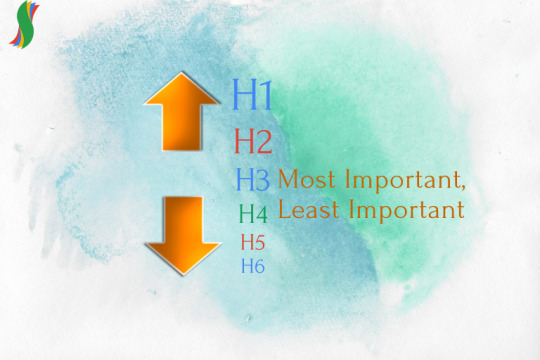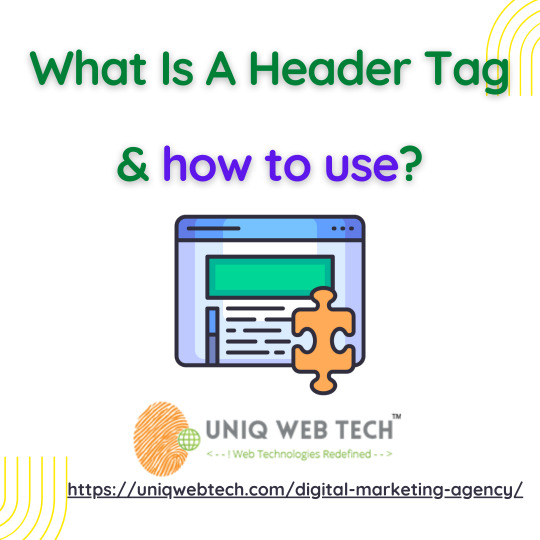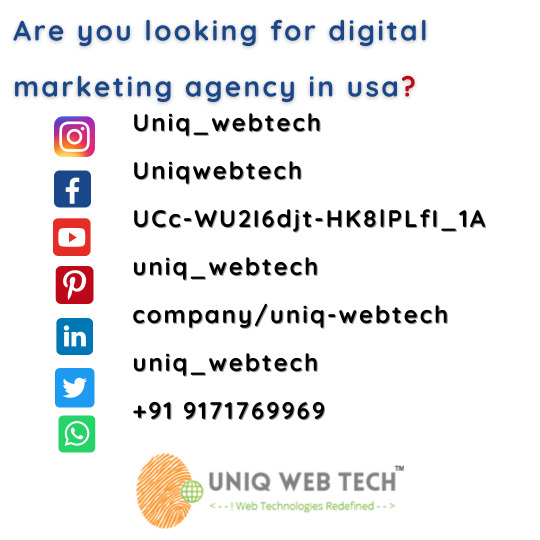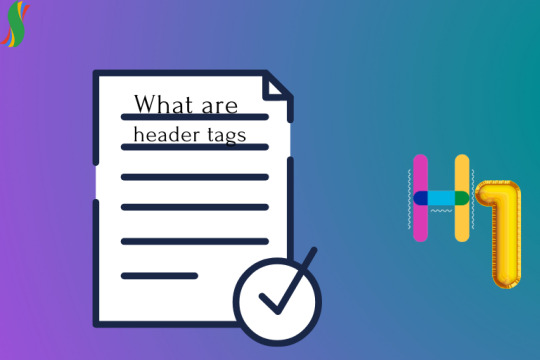#HeaderTags
Explore tagged Tumblr posts
Text
"Responsive, dynamic, unforgettable – that's our design ethos."
#KeywordOptimization#ContentQuality#MetaTags#URLStructure#InternalLinks#HeaderTags#ImageOptimization#MobileResponsiveness#PageSpeed#UserExperience#StructuredData#ContentUpdates#AnchorText#CanonicalTags#301Redirects#SchemaMarkup#SocialInteg
0 notes
Text
On-Page SEO:A Comprehensive Guide to 12 Key Factors | Digtechs
In the ever-evolving world of digital marketing, search engine optimization (SEO) remains a critical strategy for businesses aiming to increase their online visibility and drive organic traffic to their websites. Among the various components of SEO, on-page optimization plays a pivotal role. On-page SEO refers to the techniques and practices that are implemented directly on a webpage to improve its search engine rankings and enhance its overall user experience. In this guide, we will delve deep into the 12 key factors of on-page SEO that you need to focus on to achieve better online visibility and higher search engine rankings.

1. Keyword Research and Optimization:
Keyword research is the foundation of any successful on-page SEO strategy. Thoroughly research relevant keywords and phrases that your target audience is likely to search for. These keywords should be strategically placed in the page's title, headings, content, meta description, and URL. However, avoid keyword stuffing, as search engines penalize such practices.
2. High-Quality and Relevant Content:
Content remains king in the digital realm. Develop high-quality, informative, and engaging content that addresses the needs and queries of your audience. Use a mix of textual content, images, videos, and other multimedia elements to enhance user engagement. Long-form content often performs well in search rankings, provided it offers genuine value.
3. Page Title and Meta Description:
Craft compelling page titles (title tags) and meta descriptions for each page. These elements appear in search engine results and significantly influence click-through rates. Include your target keyword in the title and meta description while maintaining a clear and concise description of the page's content.
4. URL Structure:
Create clean, descriptive, and user-friendly URLs. A well-structured URL gives both users and search engines a clear understanding of the page's content. Incorporate relevant keywords in the URL, avoiding unnecessary characters or parameters.
5. Header Tags (H1, H2, H3, etc.):
Utilize header tags to structure your content hierarchically. The H1 tag represents the main heading of the page and should include the primary keyword. Subsequent header tags (H2, H3, etc.) break down the content into sections, making it easier for both users and search engines to understand the content's organization.
6. Keyword Placement and Density:
Strategically place your target keywords throughout the content, including the introduction, subheadings, and conclusion. However, focus on natural and meaningful incorporation rather than forcefully inserting keywords. Keyword density, or the percentage of times a keyword appears in the content, should be moderate and not exceed a reasonable threshold.
7. Image Optimization:
Images contribute to a richer user experience, but they can also impact page loading times if not optimized. Compress images to reduce file sizes without compromising quality. Use descriptive file names and alt text for images to provide context to search engines, making them more likely to appear in image search results.
8. Internal and External Links:
Internal links connect different pages within your website, enhancing navigation and helping search engines understand the website's structure. External links to authoritative and relevant sources add credibility to your content. Strive for a healthy balance between internal and external links to create a seamless user experience.
9. Mobile-Friendly and Responsive Design:
Given the increasing use of mobile devices for web browsing, a responsive design that adapts to different screen sizes is crucial. Google prioritizes mobile-friendly websites in its search results, making it essential to ensure that your website provides an optimal user experience across all devices.
10. Page Loading Speed:
Page loading speed directly impacts user satisfaction and search engine rankings. Compress images, leverage browser caching, minimize code, and choose a reliable hosting provider to improve loading times. Google's PageSpeed Insights can help identify areas for improvement.
11. Schema Markup:
Schema markup is a type of code that you can add to your website to provide search engines with additional information about your content. It helps search engines understand the context of your content, potentially leading to enhanced search results, such as rich snippets or Knowledge Graph panels.
12. User Engagement Metrics:
While not directly a part of on-page SEO, user engagement metrics (such as bounce rate, time on page, and click-through rate) indirectly influence your search rankings. High-quality, engaging content that keeps users on your site longer sends positive signals to search engines.
In conclusion, on-page SEO is a multifaceted approach that involves optimizing various aspects of your website's individual pages to enhance both the user experience and search engine visibility. By implementing these 12 key factors diligently and consistently, you can improve your website's chances of ranking higher in search engine results, attracting more organic traffic, and ultimately achieving your digital marketing goals. Remember that SEO is an ongoing process, and staying updated with industry trends and search engine algorithm changes is essential for sustained success.
#OnPageSEO#SEOGuide#SEOStrategy#DigitalMarketing#SearchEngineOptimization#ContentOptimization#KeywordResearch#UserExperience#TechnicalSEO#PageRank#SEOBestPractices#OrganicTraffic#SERP#ContentQuality#MetaTags#TitleTag#HeaderTags#InternalLinking#MobileOptimization#WebsitePerformance
1 note
·
View note
Text
#search engine optimization#artificial intelligence#digitalmarketing#marketing#web development#headertag
0 notes
Text

SEO Tips
Level up your website's organization with Header Tags! 🏷️✨
Discover the power of #HeaderTags in structuring your content for better readability and SEO. From H1 to H6, they guide both users and search engines through your pages. 📚🔍 Boost your site's appeal today! 💪
#Content Marketing#digital marketing#social media marketing#marketing tips#SEO#Search Engine Optimization#Travis Burch Gold Coast#Gold Coast#internet
0 notes
Link
H1 tag considered so important in Search Engine Optimization. All businesses, small and large, rely heavily on digital marketing today. In today’s world, digital marketing and advertising is the answer to increasing market share. Every industry and sector is using digital media to gather an audience and grow as a business.
2 notes
·
View notes
Link
What Is A Sitemap And How Does It Work
0 notes
Text
Header tags affect SEO

Header tags play an important role in SEO. Know why we need headings & how to use heading and heading tags in content. Familiar with how header tags affect SEO. A webpage's header tags make it easier to read and more search engine friendly.
1 note
·
View note
Photo

We as a whole realize that anyway great your substance possibly it should be advanced for #websearch tools to arrive at the #increasingnumber of #crowd.
At the point when the mix of both done right, the substance can perform ponders.
See the distinction between how the #realcontent essayist and the #websitedesign enhancement #contentauthor thinks while composing a #substance.
Visit our website:- http://bit.ly/2YVA2RF
#ContentWriter#SEOContentWriter#ActualContentWriter#HeaderTags#TitleTags#Keywords#WordsCounts#Punctuation#SpellingCheck#SentenceFormation#Tags#Technology#TechNews#NormalContent#SEOContent#WebsiteDevelopmentAgency#Content#Eitbiz#Websearch#IncreasingNumber#Crowd#RealContent#WebsiteDesign#Contentauthor#Substances
0 notes
Link
Header tags make the most of the important structure in content and it does not end here. The use of header tags has been very crucial for website ranking and attracting the right audience to the page. This post will talk about all the necessary loopholes that one has missed in understanding about header tags.
0 notes
Photo

Boom. Check out the awesome header tag! . Grab one quick, cuz they’re moving fast! . Www.pickmansvinyls.bigcartel.com . #pickmansvinyls #resinslinger #resintoy #resinart #arttoy #resinminifigure #theminifiguremilitia #resinempire #toysforsale #headertag #horrortoys #zombietoys https://www.instagram.com/p/B4ECTlKDW3n/?igshid=1h5lewkjdhf3e
#pickmansvinyls#resinslinger#resintoy#resinart#arttoy#resinminifigure#theminifiguremilitia#resinempire#toysforsale#headertag#horrortoys#zombietoys
0 notes
Text
Use header tags to organize your content and signal to search engines which sections are most important. #headertags #contentorganization #SEOstructure
0 notes
Photo




What Is A Header Tag & how to use?...#seo #digitalmarketingagencyinchennai #headertag #titletag #digitalmarketingcompanyinchennai #DigitalMarketingCompanyInUsa #digitalmarketinghttps://uniqwebtech.com/digital-marketing-agency/
0 notes
Text
Considerations for Creating a Card Component
Here's a Card component in React:
const Card = props => { return( <div className="card"> <h2>{props.title}</h2> <p>{props.content}</p> </div> ) }
It might be pretty useful! If you end up using this thing hundreds of times, now you have the ability to refactor a little bit of HTML across your app very easily. You already have that power in CSS because of the class name there, but now you have HTML control too. Feel it.
But wait. Maybe this is limiting... an <h2>? What if that really should have been an <h4> in some usages? What's the approach there? Maybe an API of sorts?
const Card = props => { return( <div className="card"> {props.type === "big" && <h2>{props.title}</h2>} {props.type !== "big" && <h4>{props.title}</h4>} <p>{props.content}</p> </div> ) }
Or maybe we force a level to be passed in?
const Card = props => { const HeaderTag = `h${props.level}`; return( <div className="card"> <HeaderTag>{props.title}</HeaderTag> <p>{props.content}</p> </div> ) }
Or maybe that header is its own component?
And a forced paragraph tag wrapper around that content? That's a little limiting, isn't it? Maybe that should be a <div> so that it could take arbitrary HTML inside it, like multiple paragraphs.
const Card = props => { return( <div className="card"> <WhateverHeader>{props.title}</WhateverHeader> <div>{props.content}</div> </div> ) }
Actually, why even ask for content with props? It's probably easier to deal with a child component, especially if what is coming over is HTML.
const Card = props => { return( <div className="card"> <WhateverHeader>{props.title}</WhateverHeader> {children} </div> ) }
There are more assumptions we could challenge too. Like card only for a class name... shouldn't that be more flexible?
const Card = props => { const classes = `card ${props.className}`; return( <div className={classes}> <WhateverHeader>{props.title}</WhateverHeader> {children} </div> ) }
I'm still forcing card there. We could drop that so that it isn't assumed, or build another aspect of the Card API providing a way to opt-out of it.
Even the <div> wrapper is presumptuous. Perhaps that tag name could be passed in so that you could make it into a <section> or <article> or whatever you want.
Maybe it's better to assume nothing actually, making our card like this:
const Card = () => { return( <> {children} </> ) }
That way anything you want to change, you have the freedom to change. At least then it's flexibility while being relaxed about it, rather than this kind of "flexibility":
<Card parentTag="article" headerLevel="3" headerTitle="My Card" contentWrapper="div" cardVariation="extra-large" contentContent="" this="" little="" piggy="" went="" to="" market="" />
That kind of extreme-API-zying just happens sometimes when you're grasping for control and flexibility at the same time.
A component model with no guidance can lead to over-componentization also, like perhaps:
const Card = props => { return( <CardWrapperTheme> <CardWrapper> <CardTitle /> <CardContent /> <CardFooter /> </CardWrapper> </CardWrapperTheme> ) }
There might be perfectly good reasons to do that, or it might be the result of componentizing because it's "free" and just feels like that's how things are done in an architecture that supports it.
There is a balance. If a component is too strict, it runs the risk of that people won't use them because they don't give them what they need. And if they're too loose, people might not use them because they don't provide any value, and, even if they did use them, they don't offer any cohesiveness.
I don't have any answers here, I just find it fascinating.
The post Considerations for Creating a Card Component appeared first on CSS-Tricks.
Considerations for Creating a Card Component published first on https://brightcirclepage.tumblr.com/
0 notes
Text
ON Page Optimization Tips
https://simiseoanalyst.blogspot.com/2019/04/how-to-optimize-on-page-activites.html
0 notes
Text
What are Header Tags and Its Importance

Separating headings and subheadings on a webpage is done with header tags, also known as heading tags. They are important to both Google and your users. Discover what are header tags and how it affects the website and SEO. A webpage's header tags make it easier to read and more search engine friendly.
1 note
·
View note
Text
Considerations for Creating a Card Component
Here's a Card component in React:
const Card = props => { return( <div className="card"> <h2>{props.title}</h2> <p>{props.content}</p> </div> ) }
It might be pretty useful! If you end up using this thing hundreds of times, now you have the ability to refactor a little bit of HTML across your app very easily. You already have that power in CSS because of the class name there, but now you have HTML control too. Feel it.
But wait. Maybe this is limiting... an <h2>? What if that really should have been an <h4> in some usages? What's the approach there? Maybe an API of sorts?
const Card = props => { return( <div className="card"> {props.type === "big" && <h2>{props.title}</h2>} {props.type !== "big" && <h4>{props.title}</h4>} <p>{props.content}</p> </div> ) }
Or maybe we force a level to be passed in?
const Card = props => { const HeaderTag = `h${props.level}`; return( <div className="card"> <HeaderTag>{props.title}</HeaderTag> <p>{props.content}</p> </div> ) }
Or maybe that header is its own component?
And a forced paragraph tag wrapper around that content? That's a little limiting, isn't it? Maybe that should be a <div> so that it could take arbitrary HTML inside it, like multiple paragraphs.
const Card = props => { return( <div className="card"> <WhateverHeader>{props.title}</WhateverHeader> <div>{props.content}</div> </div> ) }
Actually, why even ask for content with props? It's probably easier to deal with a child component, especially if what is coming over is HTML.
const Card = props => { return( <div className="card"> <WhateverHeader>{props.title}</WhateverHeader> {children} </div> ) }
There are more assumptions we could challenge too. Like card only for a class name... shouldn't that be more flexible?
const Card = props => { const classes = `card ${props.className}`; return( <div className={classes}> <WhateverHeader>{props.title}</WhateverHeader> {children} </div> ) }
I'm still forcing card there. We could drop that so that it isn't assumed, or build another aspect of the Card API providing a way to opt-out of it.
Even the <div> wrapper is presumptuous. Perhaps that tag name could be passed in so that you could make it into a <section> or <article> or whatever you want.
Maybe it's better to assume nothing actually, making our card like this:
const Card = () => { return( <> {children} </> ) }
That way anything you want to change, you have the freedom to change. At least then it's flexibility while being relaxed about it, rather than this kind of "flexibility":
<Card parentTag="article" headerLevel="3" headerTitle="My Card" contentWrapper="div" cardVariation="extra-large" contentContent="" this="" little="" piggy="" went="" to="" market="" />
That kind of extreme-API-zying just happens sometimes when you're grasping for control and flexibility at the same time.
A component model with no guidance can lead to over-componentization also, like perhaps:
const Card = props => { return( <CardWrapperTheme> <CardWrapper> <CardTitle /> <CardContent /> <CardFooter /> </CardWrapper> </CardWrapperTheme> ) }
There might be perfectly good reasons to do that, or it might be the result of componentizing because it's "free" and just feels like that's how things are done in an architecture that supports it.
There is a balance. If a component is too strict, it runs the risk of that people won't use them because they don't give them what they need. And if they're too loose, people might not use them because they don't provide any value, and, even if they did use them, they don't offer any cohesiveness.
I don't have any answers here, I just find it fascinating.
The post Considerations for Creating a Card Component appeared first on CSS-Tricks.
Considerations for Creating a Card Component published first on https://deskbysnafu.tumblr.com/
0 notes